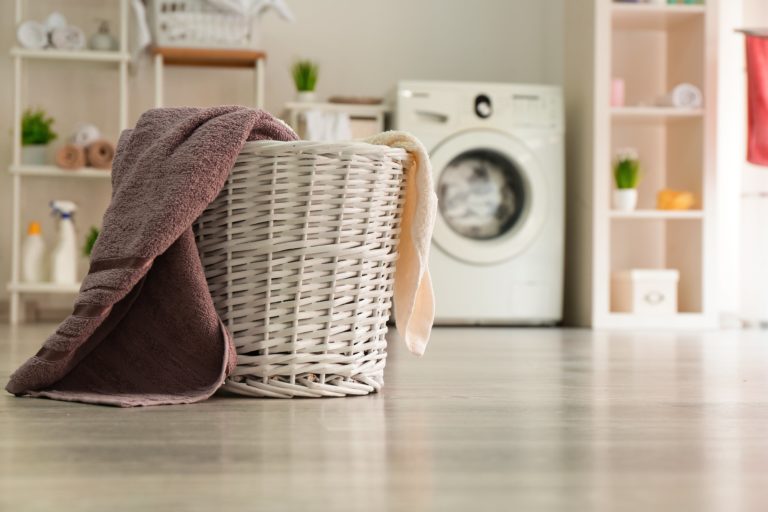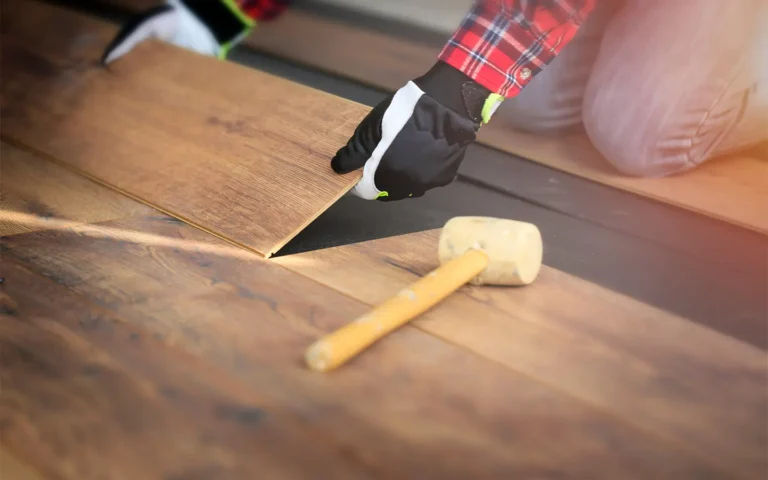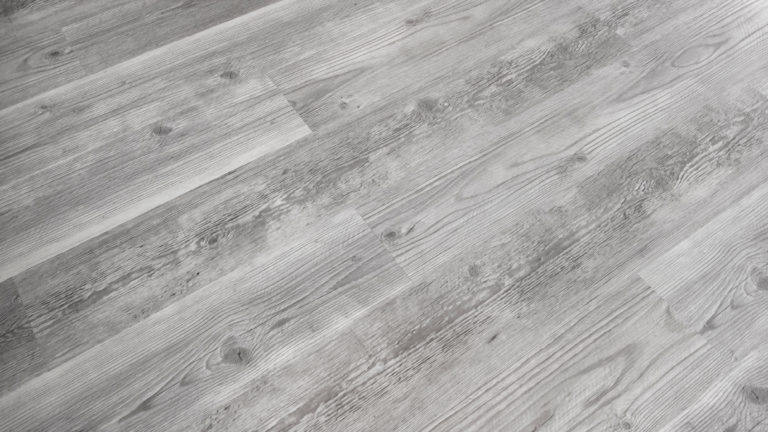This post may contain references or links to products from one or more partners of our parent company and/or subsidiaries of our parent company. For more information, visit this page.
Updated February 19, 2021
On the hunt for eco-friendly flooring options? You’re not alone!
If you’re anything like us, your ideal types of flooring aren’t just strong and beautiful—they’re sustainable and environmentally friendly, too.
Maybe you’re searching for mudroom flooring that’s not going to muddy the planet. Maybe you’re looking for the best wood flooring for dogs and for Mother Nature. Or maybe you’re dreaming of sunroom flooring that’s going to keep the sun shining on a greener tomorrow.
Whatever the case, we’re here to help. That’s why we’ve put together this list of 19 fantastic eco-friendly flooring options for sustainably-minded flooring buyers!
#1. Bamboo Flooring: Fast-Growing & Sustainable
While many people think of bamboo as a type of hardwood flooring, it’s actually part of the grass family. And like other grasses, it grows seriously fast.
In fact, bamboo only takes three to five years to grow to maturity (while the trees used to make traditional hardwood floors can take decades). This makes bamboo a very sustainable flooring choice.
And best of all, bamboo flooring functions just like all other types of wood flooring. It comes in both solid and engineered varieties (check out the pros and cons of engineered bamboo flooring for more info on that).
Plus, you can use it to create lovely wood floor patterns, it’s absolutely wonderful to walk on, and—fun fact—you can even refinish bamboo flooring. Win-win-win!
But remember: you need to pick the right bamboo to get a truly eco-friendly floor
Here’s the catch. Often, bamboo is manufactured overseas—so you have to consider the carbon footprint involved in shipping it to the USA.
Additionally, some bamboo floors are sourced from companies that clear-cut bamboo forests, destroying precious ecosystems and animal habitats.
That’s why the best bamboo flooring comes with a Forest Stewardship Council certificate showing that it has been sustainably harvested. And if you really want to make sure you’re getting eco-friendly flooring, buy a product manufactured here in the USA!
Our advice: if bamboo is one of the types of flooring you’re considering, make sure to get it from a local flooring dealer who can tell you all about who makes it and where it comes from.
#2. Stone Tiles: Timeless, Beautiful, and All-Natural
Natural stone makes our list of eco-friendly flooring options because it’s exactly what it sounds like—a totally natural product.
That means it’s durable, it doesn’t require a ton of maintenance, it won’t emit toxic gases into the environment or your home, and it requires minimal resources to produce.
Bonus: it can even help regulate your home’s temperature!
However, your stone’s place of origin makes a difference
Just remember that some natural stone materials like marble, slate, or even granite are sometimes mined outside of the USA.
So when you’re weighing the environmental impact of these types of floor tiles, make sure to factor in any shipping concerns. The large carbon footprint of importation could potentially cancel out the eco-friendliness of your stone floors.
Again: if sustainable flooring is important to you, ask a local flooring expert about how to find locally (or at least domestically) produced stone flooring.
#3. Concrete Flooring: Extremely Durable and Eco-Friendly
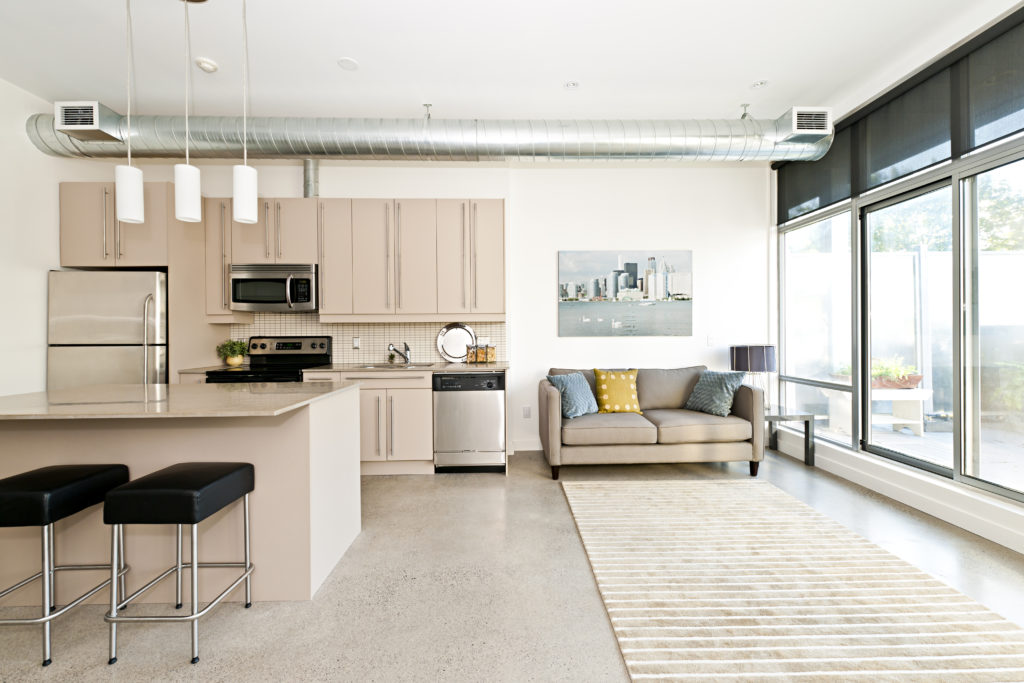
Concrete isn’t just an excellent scratch-resistant flooring option. It’s an eco-friendly flooring option too.
Why? Because concrete is essentially an all-natural floor. It’s made of rocks, clay, sand, and other naturally-occurring materials. That means it’s easy to source and easy to recycle.
But of course, you won’t need to recycle it anytime soon. Concrete is extremely durable and super chic. Concrete flooring that looks like wood, for instance, is one of the most beautiful and longest-lasting surfaces around.
Best Brands of 2024
#4. Cork Floors: Comfortable and Renewable
Suffer from allergies? Cork floors can help. Want a durable, versatile floor? Cork’s a great option. Achy joints? You guessed it—get some cork flooring!
Look, we could talk all day about the versatility and benefits that the best cork floors bring to the table. But we’ll leave that to our article on the pros and cons of cork flooring.
Instead, let’s talk about why cork production has such a minimal impact on the environment—and what makes cork such a sustainable flooring option.
Cork is naturally renewable
Cork comes from cork trees, but the product is only harvested from the tree’s bark—not its bite! Get it? Ok, fine, you’re right, not funny.
In all seriousness, though, because cork harvests only take a tree’s bark, so the same tree can be periodically harvested over and over for up to 250 years.
But wait, there’s more!
Cork flooring is actually made from the recycled waste material that’s left over after wine bottle corks are produced. That’s what we call an eco-friendly flooring material! As the Green Home Guide puts it, cork has “some serious green cred”.
#5. Engineered Hardwood: A Cost-Effective, Eco-Friendly flooring Choice
Let’s get right to the point. Engineered wood is real wood. We hear a lot of this fake wood flooring nonsense, but the fact is, there’s nothing fake about engineered hardwood.
That said, engineered wood is more environmentally friendly than its solid wood counterpart! Why? Because of the way it’s produced.
How is engineered wood made?
See, engineered wood is created by attaching a solid hardwood veneer to a super-durable durable plywood core. The way the veneer is cut doesn’t produce any sawdust, so more of the tree can be used. That may not seem like a big deal, but it really does add up.
But that’s not all! Hardwood trees grow slowly, but the trees used to make plywood cores grow much faster. And since all the best engineered wood flooring brands use these fast-growing trees to create plywood cores, less slow-growing hardwood is used.

Translation: engineered wood is a more sustainable wood flooring choice than solid wood is. And the cost to install engineered hardwood flooring is also much lower for the exact same reason!
Are there some engineered wood disadvantages to consider before starting your flooring project? Sure—but sustainability isn’t one of them. When it comes to hardwood floors, they’re definitely the more eco-friendly option.
#6. Reclaimed Hardwood: Eco-Friendly by Definition
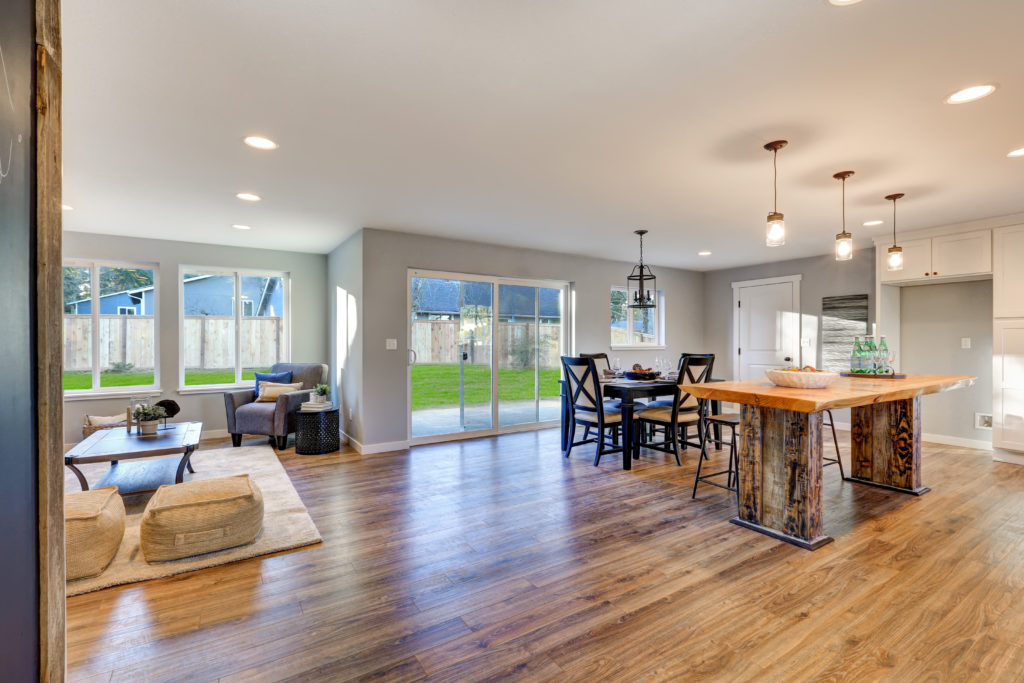
Speaking of wood floors: if you’re trying to find the best hardwood floors for your home, we’d recommend going beyond new products and checking out some reclaimed wood as well.
Reclaimed hardwood is an eco-friendly flooring option by definition—because it’s essentially a recycled product!
Think of the huge environmental impact involved in harvesting trees and turning them into flooring. Reclaimed hardwood avoids this process and lowers the environmental footprint of your floors as a result.
Plus, many of the best hardwood floor brands actually sell reclaimed hardwood flooring in addition to new wood. So you don’t have to worry about being short on choices!
#7. Pine and Other Softwoods: More Sustainable than Hardwoods
Treated right, softwood surfaces like pine and Douglas fir flooring can last for generations. But that’s not why we consider pine flooring one of the most eco-friendly flooring options around.
Pine is hardy, it’s resilient, and it grows very quickly—much more quickly than hardwood trees like oak or walnut. Plus, pine trees are easy to source locally, so you don’t have to worry about the carbon footprint involved in shipping your floors from across the world.
Softwoods aren’t just eco-friendly flooring—they’re long-lasting, too
Even though softwoods might not be the most durable wood flooring as far as scratch-resistance is concerned, their softness makes them quite easy to refinish.
And of course, the easier a floor is to refinish, the less likely it is that you’ll have to buy a whole new one—and the lower the cost to refinish that wood flooring overall.
If you’re on the hunt for sustainable flooring choices and you love the look of hardwood, think about giving softwoods like pine and Douglas fir a try.
#8. Glass Tiles: Beautiful, Sophisticated, and Recyclable
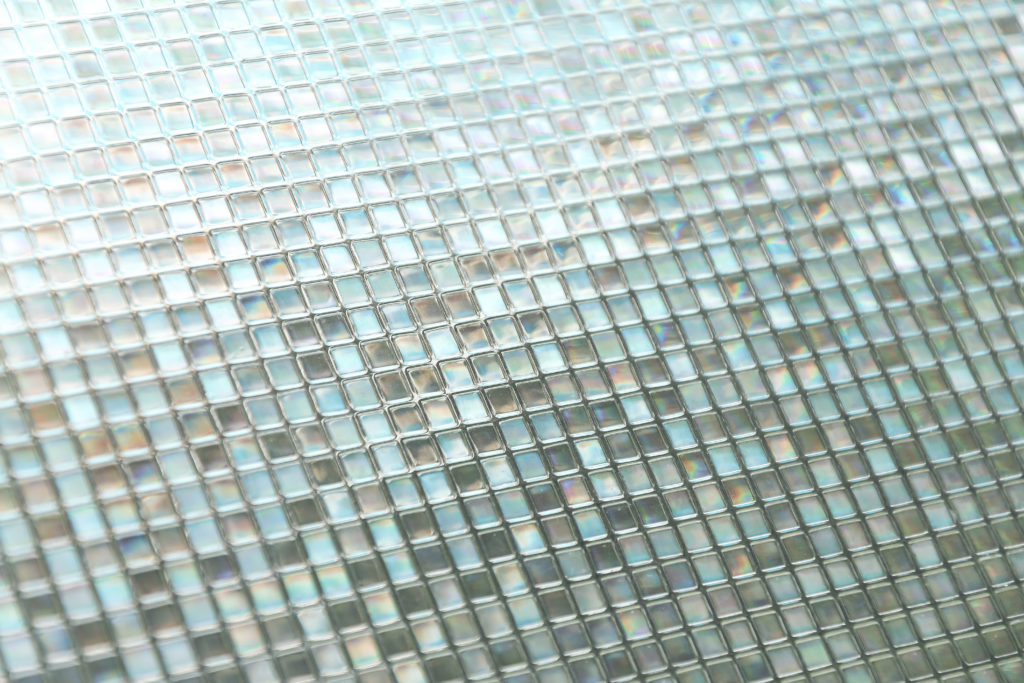
There are tons of types of tile out there, and glass tile is one of the most beautiful—and eco-friendly.
Why? Glass tiles are often made from recycled materials. And even if your glass tiles aren’t made of recycled materials, you can still recycle them at the end of their life in your home. That means you won’t be contributing to junk in a landfill.
Not sold yet? Glass tiles also require less energy to produce compared to ceramic tiles. There is a catch though—they aren’t as durable as some of your other types of flooring like concrete.
#9. Laminate Flooring: Durable, Affordable, and Surprisingly Green
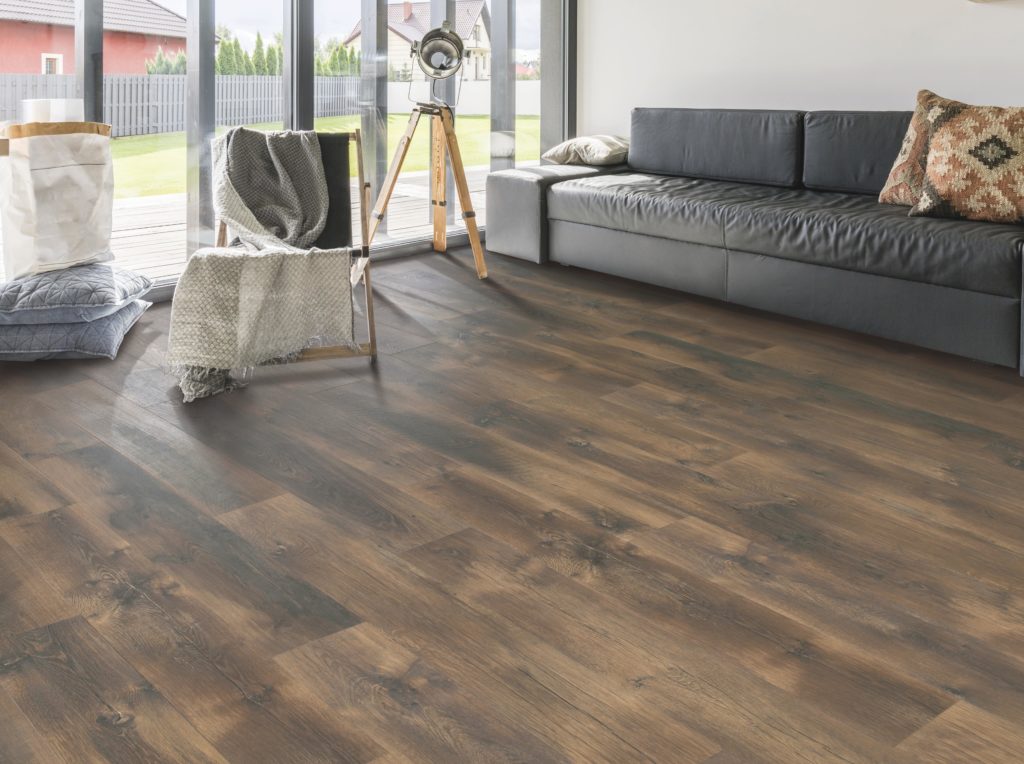
What is laminate flooring, exactly? It’s a super-popular composite flooring material made of 3 layers: a core base layer, an image layer, and a durable plasticate wear layer.
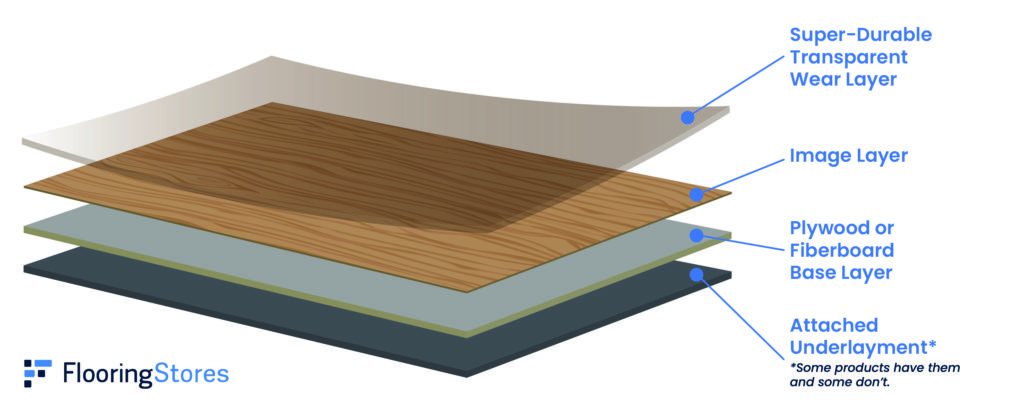
Laminate has been around for about 50 years, and it’s designed to add style and value to your home while withstanding wear and tear. It’s designed (most often) to look like wood, so it’s a top hardwood floor alternative for homeowners who want the look and feel of wood floors but with added durability—and often, at a more affordable price point.
But what makes it a green flooring option? The answer is in its construction! That base layer? It’s made of wood by-products and glue—so mostly recycled material. The image layer? Embossed paper. The wear layer? A thin sheet of plastic. All in all, it’s a surprisingly environmentally friendly floor.
Plus, laminate floors are great for DIY-ers
Thinking about trying your hand at a do-it-yourself flooring installation? Laminate may be a good place to start. It’s often sold as click-together flooring, which is used to make floating floors.
What is a floating floor? If you’re not familiar with that term, it’s a surface that snaps together into place. There are some disadvantages of floating floors, but overall, they’re some of the easiest floors to install.
#10. Linoleum: An Eco-Friendly Flooring Choice with a Huge Range of Designs
Forget what you think you know about linoleum. It’s making a major comeback, and we’re cheering for it! We’ve missed all the fabulous colors and designs it brought to the flooring scene.
Why does linoleum make our list of eco-friendly flooring options? Because it’s actually made with 100% biodegradable materials like linseed oil and pine resin!
Marmoleum, one of the most popular modern linoleum brands, boasts the lowest environmental impact of any floor covering out there. Crazy, right?
Pro tip: many people confuse linoleum vs. laminate (and even vinyl)—but they’re actually very different materials. And on that note…
#11. Vinyl Plank: A Surprisingly Eco-Friendly Floor
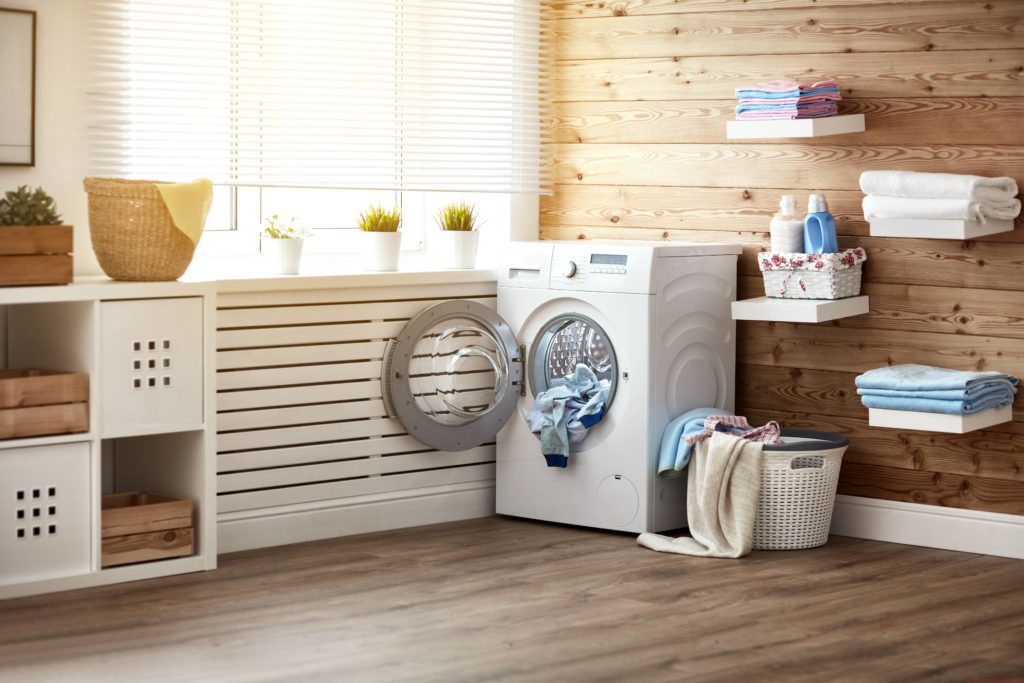
We know what you’re thinking: vinyl? Eco-friendly flooring? There’s no way!
But oh yes, friends—the best types of vinyl flooring aren’t just beautiful and durable. They’re sustainable too! It’s true that vinyl is essentially made of plastic, and plastic isn’t environmentally friendly flooring.
But: since vinyl floors can last for decades and are often waterproof, you won’t need to replace them often—or at all. This drastically reduces the carbon footprint involved in replacing and disposing of flooring products.
In fact, many of the best vinyl plank flooring brands come with decades-long or even lifetime warranties. Don’t believe us? Read some Pergo Extreme reviews—they’ll tell you everything you need to know.
Just make sure to get a product that’s FloorScore-certified and VOC-free
Before you settle on a vinyl floor, though, make sure it’s FloorScore-certified.
These products are compliant with the state of California’s VOC emissions standards, which are some of the strictest in the country. That way, you know you’re getting the most environmentally friendly floor possible.
Our advice? If you want low-VOC vinyl flooring, skip the box store stuff like Lowes’ SmartCore flooring Home Depot’s LifeProof vinyl flooring. Nine times out of ten, it’s just not worth the time.
Instead, check out brands that only sell low-VOC flooring, like Proximity Mills.
#12. Porcelain and Ceramic Tile: Natural, Environmentally-Friendly Flooring
Porcelain and ceramic tiles have been around for literally thousands of years. Why? They’re made from natural materials (clay, mostly), and they have an incredibly long life cycle.
That’s right—no VOCs, no formaldehyde, no trees being cut down, no plastic, no nothing. Just clay, glaze, and heat. Talk about environmentally friendly flooring!
And for our friends in hot or humid climates (Florida, we’re looking at you): tile conducts heat better than most other flooring types, which means tile floors lead to lower cooling bills. Cha-ching!
PS: If you’re comparing the pros and cons of tile vs. laminate, just know that while both of these materials qualify as eco-friendly flooring… we have to give the win to tile. It’s just a more sustainable flooring option.
#13. PET Carpet: Keeping Plastic Out of Landfills
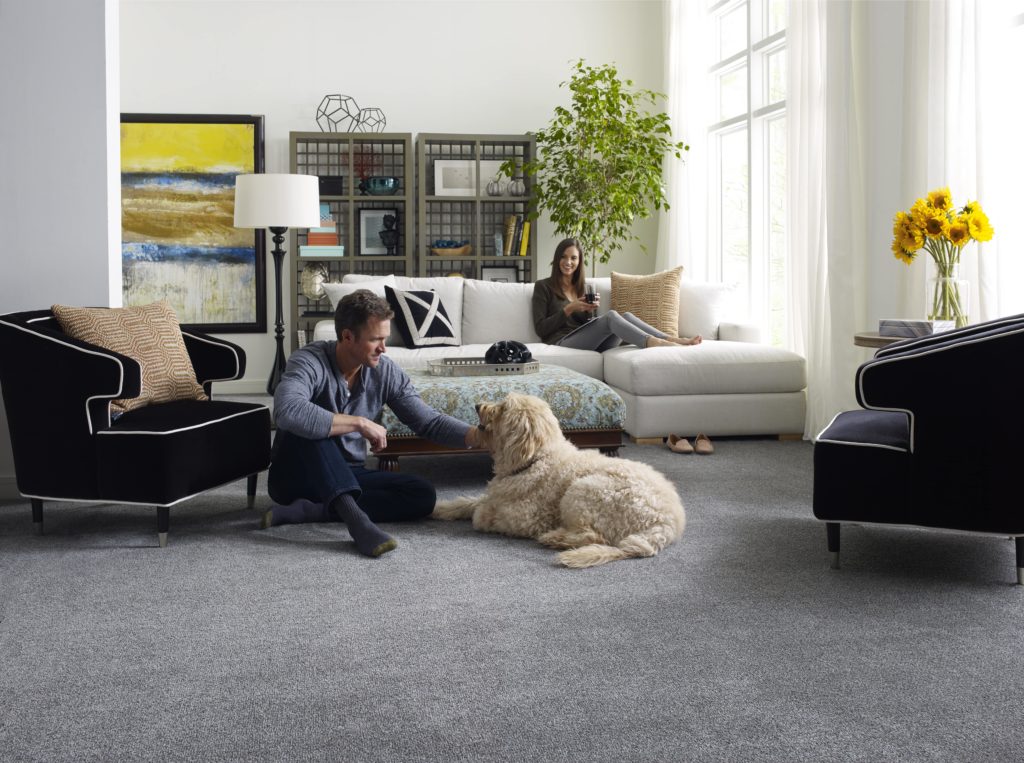
Not pet, like a dog or cat—we’re talking P.E.T. (polyethylene terephthalate). Yeah, it’s a tongue twister. Stay with us here. What is PET? It’s a strong and stiff synthetic fiber.
But what makes PET carpet an eco-friendly flooring choice? It’s made from recycled materials! Seriously—some manufacturers use recycled plastics from items like bottles and even tires to make PET carpet.
Again (and we’re not trying to shame laminate here)—but if you’re comparing PET carpet vs. laminate, PET takes the eco-friendly cake. It’s recycled, after all!
Oh, and pro tip: you can find lots of low-VOC carpet options if you know where to look.
#14. Wool Carpet: Durable, All-Natural, Eco-Friendly Flooring
Wool comes right off the sheep, so it’s a product that continuously replenishes itself. This natural fiber option is also stain-resistant and naturally fire-retardant.
There is a catch, though—while wool carpet is durable and renewable, it’s also a little pricey.
That being said, the cost to replace carpet with hardwood can be pretty steep as well—so if you’re looking to change up your old carpets with an environmentally friendly choice, take a look at wool.
PS: if you want to incorporate the carpet option without going wall-to-wall, shop for smaller carpet pieces like peel and stick carpet tiles.
#15. Rubber Flooring: Made From Recycled Materials
Rubber? Talk about unique flooring options! But really, there are some major benefits of installing rubber flooring.
For starters, it can reduce noise, improve air quality, and is very low maintenance. And if you’re worried about germs, it also has natural antimicrobial properties.
But that’s not what makes rubber flooring an eco-friendly flooring option. Many types of rubber flooring are actually made with recycled materials or post-consumer waste!
#16. Recycled Metal Tiles: Unique, Environmentally-Friendly Floors
Continuing on the “unique flooring” train, let’s talk recycled metal tiles. While they’re not wildly popular (yet), these floors are exactly what they sound like: metal surfaces that have been recycled and turned into tiles.
They can be hard to find, but they can go anywhere in your home where you want that industrial-chic look that’s oh-so-popular nowadays.
#17. Leather Flooring: Unusual but All-Natural
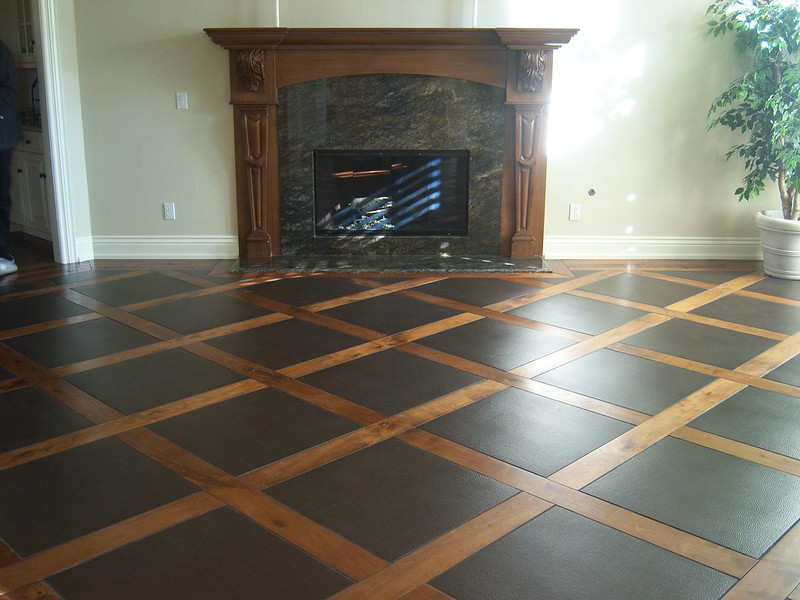
Much like engineered wood flooring, leather planks are built from plywood with a layer of recycled leather adhered to the top.
The keyword here is recycled. The leather comes from recycled or reclaimed shoes, clothes, or even unused hides from the meat production industry!
Added benefit: leather flooring is a great product to consider if you want a soft feel underfoot. It also cuts down on noise like you wouldn’t believe!
#18. Composite Decking: A Non-Traditional, Eco-Friendly Indoor Floor
What is composite decking, exactly? It’s a composite flooring option made from thermoplastic resins, wood flour (a super-fine sawdust), and wood fiber.
Most often, these planks are made primarily from recycled materials—giving them some serious environmentally friendly flooring qualities.
And we know what you’re thinking. Decking? Inside the house? Give me a break.
But we’re serious! Composite decking can be used indoors to create non-traditional but totally comfy (and beautiful) eco-friendly floors.
Composite decking is super durable
Because it’s so hard and nonporous (after all, it is made to withstand the elements) composite decking can go where most water-resistant wood flooring products can’t.
Want a wood floor bathroom but don’t want to shell out the big bucks for teak flooring? Composite decking is a great alternative.
Bonus: composite decking is rot-resistant, so it lasts a long time before needing to be thrown away and/or replaced. Plus, it’s often less expensive than traditional wood!
#19. Artificial Grass: Often Made From Recycling (and Great for Kids)
And last (but certainly not least) on our list of sustainable flooring options, we have artificial grass.
Check it out: grass is moving indoors because it’s soft and kid-friendly and it looks cool. But that’s not all: it also has some pretty huge environmental benefits.
Artificial grass is often made with recycled materials. Win! And many artificial grass can be recycled again after it’s reached the end of its lifespan. Win-win!
So: Which Eco-Friendly Flooring Option Is Right for You?
Clearly, there are plenty of sustainable flooring options available if you’re looking for a material that’s gorgeous, strong, and environmentally friendly.
We just hope we’ve helped you along in your floor buying journey!
And we’d be remiss if we didn’t mention it again: the absolute best way to find the perfect eco-friendly flooring is to talk with a local flooring expert. So find a flooring store in your area and get started today!
And for more information on flooring, check out:
About The Author

Rebecca Collett
September 2, 2020
Rebecca hails from Charleston, SC where she's refinished two homes with her husband (so far). She's addicted to the beach and seafood, but her greatest love is her family, including her husband and three sons.

